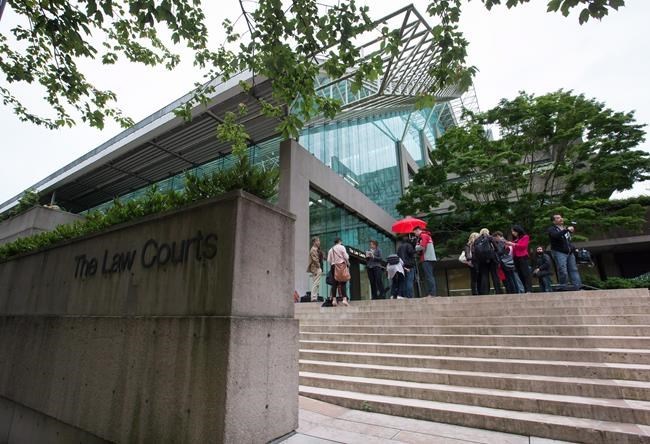VANCOUVER — A lawyer for Ibrahim Ali at his B.C. murder trial highlighted part of an expert witness's report Friday saying there's "considerable overlap" between the type of injuries that can occur in consensual and non-consensual sex acts.
Sexual assault expert Dr. Tracy Pickett previously testified that injuries suffered by a 13-year-old girl found dead in a Burnaby, B.C., park six years ago "strongly indicated" sexual assault.
Ali has pleaded not guilty to the girl's first-degree murder.
Pickett, a Crown witness, pushed back under cross-examination by Ben Lynskey in the B.C. Supreme Court, as the two had a lengthy exchange about what the word "considerable" in her report meant.
"There can be considerable overlap between the location and type of injury seen with both consensual and non-consensual sexual activity, such that it is impossible to speculate on consent based solely on consideration of the location or type of injury in isolation," Lynskey said, reading the report aloud to the court.
After more debate over wording, Pickett later said the report was correct in that it is impossible to speculate on consent specifically "when you look at an injury in isolation."
She previously told the court she considered all of the injuries the girl sustained, including to her face, head, neck, knees, back, both legs and arms, and genital and anal regions, before forming her conclusions.
Pickett agreed with Lynskey that some of the girl's injuries, including bruises on her arms and abrasions on her head, could be unrelated to sexual activity.
Lynskey focused much of his cross-examination on the medicallimitations of assessing whether a sex act was consensual or non-consensual.
Pickett, who specializes in emergency and clinical forensic medicine, said there are many topics in the medical field that cause controversy and overlap could be attributed, in part, to the fact the genital region is "a small area."
Lynskey later asked Pickett if it was the first time she had been asked by police or Crown lawyers to comment on the injuries of a dead person. Pickett said she believed it was.
The girl's body was found in Burnaby's Central Park early on July 19, 2017, just hours after her mother reported her missing.
The teen can't be named because of a publication ban.
Caution: Graphic material follows
Crown witness and RCMP forensic biologist Christine Crossman had testified last week that only the DNA of Ali and the girl was detected from swabs of her vaginal area, with sperm cells matching Ali’s DNA.
Pickett testified Friday that semen would pool in a woman's vaginal vault, as it is biologically designed to do, but it would leak out "relatively quickly" due to gravity if she then had been vertical, particularly if she was being active.
"My opinion would be there would not be a large volume (remaining) if she was vertical, walking around (or) active after, particularly not hours later," she said.
Pickett said that would not happen if the woman remained lying down.
Kevin McCullough, another lawyer for Ali, has previously suggested that whoever had "forced sex or sex” with the girl may not be the person who killed her.
Crown attorney Isobel Keeley said in an opening statement in April that the court would hear evidence showing the girl was walking or running through the neighbourhood park when she was dragged off a pathway into the forest by Ali, who sexually assaulted and strangled her to death.
The defence has not yet told the jury its theory of events, but has said Ali's genetic profile only matched samples from the 13-year-old girl's vaginal and anal areas.
McCullough asked Crossman to confirm several pieces of evidence were not tested for DNA, including the girl's stained clothing, which could have established another suspect in the case.
This report by The Canadian Press was first published Sept. 22, 2023.
Brieanna Charlebois, The Canadian Press



